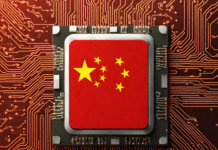In a rush to beat trade restrictions, Chinese imports of semiconductor manufacturing equipment from Japan experienced a significant surge in June. According to non-public Chinese customs data reported by the chip industry portal Ijiwei on Thursday, imports of chip-making gear reached a staggering US$804 million in June, marking a 41.6 percent increase from the previous month. This surge in imports occurred despite a year-on-year decline of 10.5 percent compared to the same period last year.
The spike in imports comes in response to Japan’s recent imposition of tighter controls on the export of certain advanced semiconductor tools, which took effect on June 30. The move by Japan seems to be aimed at targeting China and follows similar export restrictions imposed by the Netherlands and the United States, both major players in the production of cutting-edge semiconductors.

Among the imported equipment, photolithography steppers, used for printing chip designs on wafers, saw an astounding growth rate of 137.1 percent, reaching a value of US$62.4 million. Additionally, the value of etching and stripping machines brought into Japan surged by a remarkable 370.1 percent, amounting to US$44.4 million.
The export controls imposed by Japan listed 23 types of semiconductor technology that are now subject to restrictions since July 23. This list includes critical advanced microchip manufacturing equipment, such as machines responsible for depositing films on silicon wafers and devices used to etch out the microscopic circuits of chips.
Yoshiaki Takayama, an analyst at the Japan Institute for International Affairs in Tokyo, explained that the restricted measures put in place by Japan complement the export controls initiated by the United States. With only a limited number of companies capable of manufacturing cutting-edge chips, China’s ability to produce advanced chips is expected to be seriously affected. Not only will importing advanced chips be difficult, but manufacturing them locally will also face significant challenges.
As a response to these trade restrictions, it is speculated that Beijing may shift its semiconductor strategy to focus on middle- and low-end semiconductor manufacturing instead of pursuing cutting-edge capabilities.
In conclusion, the rapid increase in Chinese imports of chip equipment from Japan in June reflects the urgency of local chip makers trying to stock up before Tokyo’s new export restrictions took effect. These measures are expected to impact China’s semiconductor industry and its ability to produce advanced chips, prompting possible shifts in its strategic approach moving forward.
Related:
- Microsoft and Japan Partner to Bring AI to the Government: Efficient or Dangerous?
- Japan’s new chip equipment export rules kick in on July 30
- EU and Japan Strengthen Cooperation on Semiconductors for Defense and Automotive Industries
(via)







